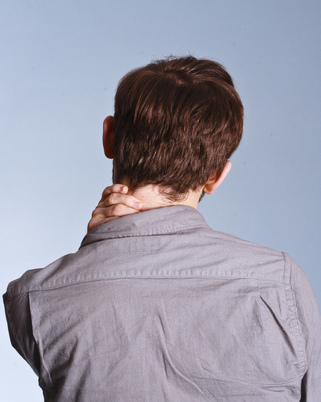Neck Pain: The Problem

THE NECK PAIN PROBLEM
by
Dr. George DeFranca
The chances are good that your pain is not from something that is very serious. Most commonly it is from stiff and poorly functioning joints and muscles that are very pain sensitive. You need to stay as active as possible and to gradually increase your physical activity. Know that it is safe to do so and that so long as your pain is NOT spreading away from your spine (ie, into your shoulder, or down your arm), that the hurt does not necessarily equal harm. It is just a sign that you are moving stiff, yet painful, areas. Do not bed rest to get this better- it won’t, it will only make you more stiff and deconditioned.
Action steps to take:
by
Dr. George DeFranca
- Nearly everyone will suffer painful neck and back pain. If you have it, this is just your turn.
- Most begin recovery quickly – that is, it is considered “self-limiting”.
- But, significant symptoms & activity intolerance may linger.
- Recurrent “flare-ups” are common.
- Fearful nature
- Depressed
- Unemployed
- Out of shape
- Smoke/drink alcohol
- Sleep difficulty
- Anxious, worrier
- Chronic pain
- Job dissatisfaction
- Extreme pain
- Poor health
- Pain spreading below elbows
The chances are good that your pain is not from something that is very serious. Most commonly it is from stiff and poorly functioning joints and muscles that are very pain sensitive. You need to stay as active as possible and to gradually increase your physical activity. Know that it is safe to do so and that so long as your pain is NOT spreading away from your spine (ie, into your shoulder, or down your arm), that the hurt does not necessarily equal harm. It is just a sign that you are moving stiff, yet painful, areas. Do not bed rest to get this better- it won’t, it will only make you more stiff and deconditioned.
- Painful tissues are often reactive to initial treatment and exercise.
- Joints, muscles, ligaments, and discs can become irritated and result in reflex “spasm”, however: Such irritations are NORMAL & do not constitute re-injury.
- Pain or anticipation (fear) of pain can enhance this “spasm” or make it worse. Patients who equate hurt with harm develop a disabling form of thinking. This is part of fear–avoidance behavior which promotes deconditioning (being out of shape). It is important to identify your fears around your pain and avoid taking on a “sick role” (using your pain to gain attention, etc.).
- LIGHT activity won’t further injure the spine, & will actually enhance the repair & recovery process. Walking and getting about is great exercise for a painful neck.
Action steps to take:
- Avoid bending your neck forward during the first hour of the day or after sitting for more than 30 minutes as your spine is more at risk for a bending injury then.
- Do the cervical spine retraction or chin tuck exercises, either lying face down, sitting, or standing, as often as you can (one set of 10 repetitions each 1-2 hours).
- Do not sit for more than 20-30 minutes at a computer or reading with your head forward or looking down without getting up for even a few minutes.
- When you sit, do so with a straight back. Do not slump as this will thrust your head forward and stretch and aggravate your pain sensitive tissues.
- Use ice applications for 30 minutes to soothe your pain. Do this hourly.